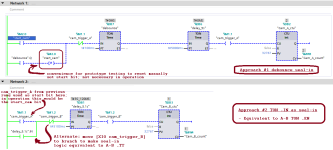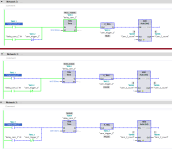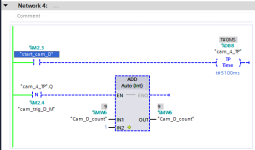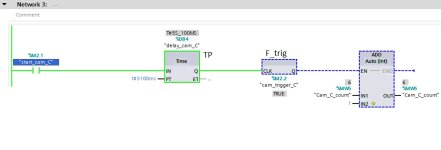hi i have had a mind blank on a tia and was wondering for a easy option .
i have a trigger signal that will see a mark and set a delay timer off and then trigger a out put to trigger a vision camera ?
how do you hold the triger on to the timer if the timer loses its enable it stops?
in ab you could use a tt bit but not sure in Tia
silly question i know but im sure you guys have the answer
thank stu
i have a trigger signal that will see a mark and set a delay timer off and then trigger a out put to trigger a vision camera ?
how do you hold the triger on to the timer if the timer loses its enable it stops?
in ab you could use a tt bit but not sure in Tia
silly question i know but im sure you guys have the answer
thank stu










